February 27 (Lunar calendar: February 08), 2023 Monday | Dawnxisoul393art
《The Tin Hau Goddess in Peng Chau Island, Hong Kong》, painted by dawnxisoul393
In Hong Kong, especially in the rural bays of Hong Kong, no matter where you go, people can always see a goddess Temple of "Tin Hau(Heavenly Queen)" nearby. Over the years, we walked into the Tin Hau temples all over the streets of Hong Kong and learned about the stories of Tin Hau. The "Queen of Heaven (Tin Hau)" revered by Hong Kong people is actually the "Goddess of the Sea". "The Mazu faith" is a faith in the sea goddess that is centered on the southeast coast of China and spreads throughout the coastal areas of East Asia. Her influence over the centuries has had a significant impact on East Asian maritime culture and is known to scholars as "Mazu Culture". According to folklore, in the early Northern Song Dynasty, Tin Hau was born in a "Lin" family in Meizhou Island, Putian County, Fujian Province, China. When she was born, there was auspicious light and fragrance in the sky. Until the full moon, the baby girl did not cry, so it was named "Mo (Silence)". Mo was smart since childhood. When she grew up, she knew how to predict the weather. She was also proficient in medical skills and saved countless people.
Illustrated by dawnxisoul393
It is said that Mo has been good at swimming and driving boats since she was a child. If fishermen were in danger at sea, Murdoch would go to the rescue. Year after year, she saved countless fishermen. At the age of 28, Mo died to save people. The villagers were grief-stricken, who did not want to believe that she was shipwrecked, preferring to believe that Mo rose to heaven and became a goddess of the sea, to protect people forever safe and smooth. After Mo became a goddess of the sea, she often rescued people in distress at sea. The fleet of Zheng He, a famous eunuch of the Song Dynasty, made seven successful voyages to the west, which was also helped by the goddess of mo. The story of the goddess has spread all over the world. Successive monarchs have given her the title of "The Heavenly Princess". During the reign of Emperor Kangxi of the Qing Dynasty, the court sent troops to recapture Zheng Ke-Shuang in Taiwan, and the soldiers prayed to the goddess to get out of danger because their ships were stranded. When Emperor Kangxi learned of this, he changed the title of "The Heavenly Princess" to "The Heavenly Queen" for Mo. Since then, the Goddess of Heavenly Queen (Tin Hau)has become the patron goddess of the sea for fishermen and all mariners in Chinese societies in China and Southeast Asia.
So far, there are at least 98 Tin Hau temples in Hong Kong, all over islands and urban areas. We have lived on Peng Chau Island for many years, and we have a deep understanding of the belief in the god and goddess on the island. At first, it was a place where fishermen lived. One of the most famous temples in Peng Chau and the only one on the island to be classified as a Grade I historic building in Hong Kong - Tin Hau Temple. Although Peng Chau Island is an industrial Island, it was dominated by fishing in the earliest days. In order to ensure good weather on Peng Chau, fishermen would pray for the protection of the god or goddess of heaven. Tin Hau has made great contributions to the older generation of residents in Peng Chau. Under the protection of Tin Hau, Peng Chau Island has made many safe transitions. In order to bless the good weather and the safety of the boats, people gathered funds to build this temple. As for the year when the temple was built, according to the inscription in the temple, the Tin Hau Temple in Peng Chau was built in the 57th year of Qianlong (1792).
Illustrated by dawnxisoul393
Sandalwood is also enshrined in the temple, which is said to have the function of warding off evil spirits. In addition, the ancient bell cast in the 57th year of Qianlong (1792) and the rebuilt stele in the 12th year of Daoguang (1832) are still stored in the temple. Tin Hau Temple was rebuilt in the third year of Jiaqing (1798), the third year of Guangxu (1877), and 1998 respectively. Peng Chau Tin Hau Temple has a long history. It is said that the five-foot-long and half-foot wide whale bones in the temple were used by fishermen to dedicate Tin Hau a hundred years ago. In addition to the ancient clock (1752), incense burner, and rebuilt stele inscriptions forged during the Qing Dynasty, there are also many pairs of couplets in the temple. It is said that the pirate Zhang Baozai was active in the waters of Hong Kong in the early 17th century. One day, when the pirates were about to loot Peng Chau, a sudden gust of wind broke the red flag on the top of the ship's mast and fell down. Zhang Baozai was shocked and immediately ordered everyone to stop action.
Zhang Baozai then led the crowd to the Tin Hau Temple to worship Tin Hau and asked for a sign in front of the Goddess. The sign was "protect the family and defend the country", so he announced the protection of Peng Chau. Later, in 1809, Zhang Baozai fought with the Qing army in the Chek Lap Kok sea area. The following year, Zhang Baozai accepted the imperial court's surrender and was granted a military official. On the stone wall beside the gate of Peng Chau Township Committee next to Tian Hou Temple, there is a "monument for banning and sealing ships", which was set up in the 15th year of Daoguang (1835) At that time, the officers and men arbitrarily used fishermen's boats to disguise themselves as merchant ships to arrest pirates, which affected the livelihood of fishermen. The fishermen signed a joint report to the county magistrate. They were approved to prohibit the officers and men from using fishing boats again, and allowed to erect stones to show the ban, so as to implement the ban for a long time.
Peng Chau neighborhoods and societies celebrate Tin Hau's birthday on March 23 of the lunar calendar every year. On the eve of Tin Hau's birthday, the temple neighborhood in Peng Chau arranges two nights and one-day activities. The activities begin on the evening of March 21 of the lunar calendar. On March 23 of the lunar calendar (the birthday) Different groups dance lions to pay homage to the temple. Many believers also make a special trip to the temple to participate in the celebration. In the evening, the temple holds a banquet to entertain members. From May 28 to the third day of June of the lunar calendar, the troupe staged five nights and four days of performances. It is said that there was a great plague in Peng Chau and the residents had no choice but to ask the Tin Hau to leave the Tin Hau Temple for a day to visit the island to eliminate the plague. After the visit, the plague gradually disappeared and the sick were cured. The day when Tin Hau visited the island was the 21st day of the 7th lunar month.
Illustrated by dawnxisoul393
Since then, every year on July 21 of the lunar calendar, a parade around the island of Tin Hau was held. Many people outside the island also came to Peng Chau to participate in the parade around the island. At that time, the coast of Peng Chau island was filled with festive flags and a traditional festive atmosphere. On the morning of that day, various island patrol groups around Peng Chau held opening and celebration ceremonies first, then all the people went to the Tin Hau Temple to pay homage and respectfully invited Tin Hau to ride in a sedan chair to patrol the island to suppress evil spirits and clean the community. At noon, the island parade departed from Tin Hau Temple to the countryside under the leadership of the organizer, Peng Chau Tin Hau Temple Neighbourhood Upholding Committee (Peng Chau Rural Committee), At the same time, the whole island prays to Tin Hau and blesses the safe return of the family members who went to sea. This is the biggest festival in Peng Chau.
Near noon, gongs and drums were blaring, firecrackers were blaring, and the Tin Hau parade officially began. Peng Chau residents were divided into several teams according to the color of their clothes to form a square array of different teams. Carrying flags and various props, they came to the Tin Hau Temple for a lion dance performance. With the sound of gongs and drums, the residents paraded around the island carrying flags. Many children also followed their parents to participate in the dragon and lion dance teams. There is no tourist commercial atmosphere in Peng Chau, there is the simple life atmosphere of the islanders. When we lived in Peng Chau, we sometimes sketched and painted at the seaside, looking at the waves, the white sailboats in the distance, and the white clouds in the sky, even our souls feel quiet, but on that day, Peng Chau was such a lively place, every year at this moment, we were feeling people's love for Goddess Tin Hau, and Goddess Tin Hau's love for people!





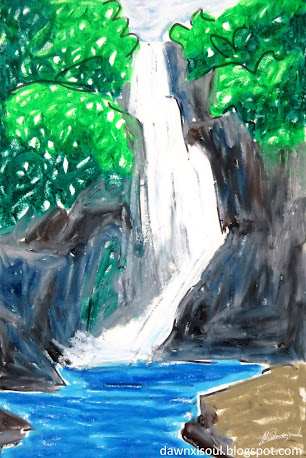
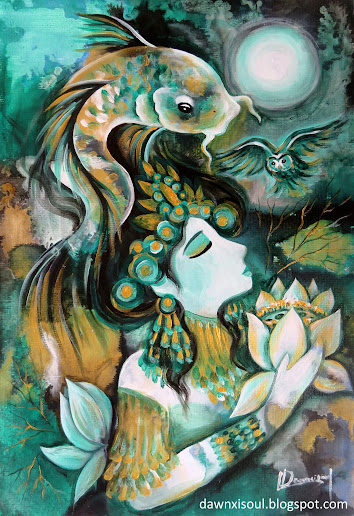

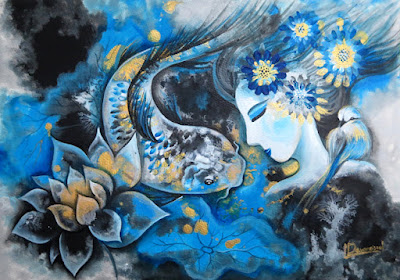
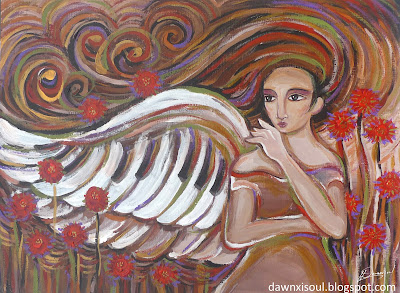
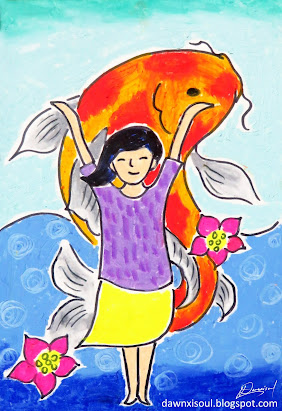


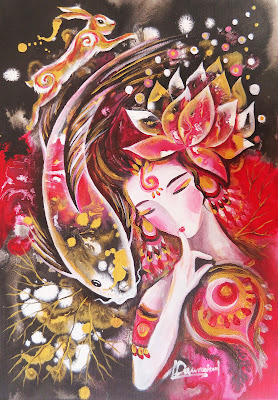
Comments
Post a Comment